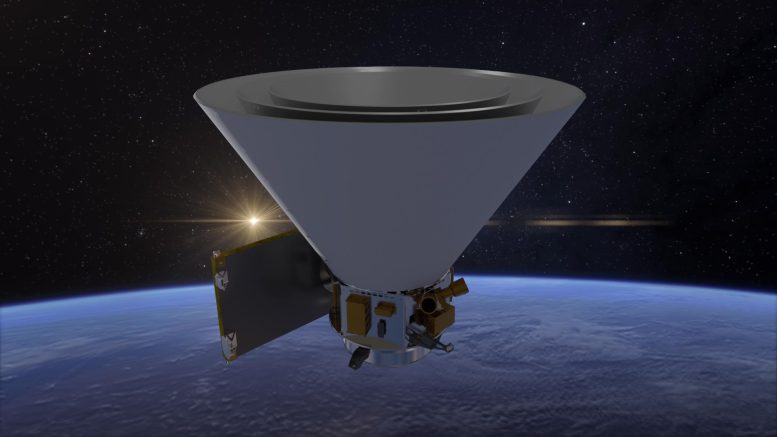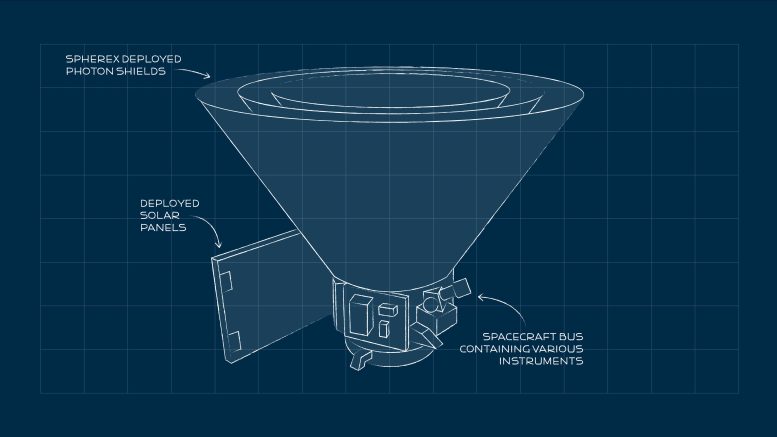The SPHEREx mission will have some similarities with the
It’s a long road from designing a spacecraft to launching and operating it. Major components of NASA’s SPHEREx spacecraft, which will seek to answer big questions about the universe, are shown in these illustrations, in draft form (this image) and now more fully realized (below). Credit: NASA/JPL-Caltech
“We’re at the transition from doing things with computer models to doing things with real hardware,” said Allen Farrington, SPHEREx project manager at NASA’s Jet Propulsion Laboratory in Southern California, which manages the mission. “The design for the spacecraft, as it stands, is confirmed. We have shown that it’s doable down to the smallest details. So now we can really start building and putting things together.”

It’s a long road from designing a spacecraft to launching and operating it. Major components of NASA’s SPHEREx spacecraft, which will seek to answer big questions about the universe, are shown in these illustrations, in draft form (above) and now more fully realized (this image). Credit: NASA/JPL-Caltech
To answer big questions about the universe, scientists need to look at the sky in different ways. Many telescopes, like NASA’s Hubble Space Telescope, are built to focus on individual stars, galaxies, or other cosmic objects, and to study them in detail. But SPHEREx (which stands for Spectro-Photometer for the History of the Universe, Epoch of Reionization and Ices Explorer) belongs to another class of space telescopes that quickly observe large portions of the sky, surveying many objects in a short period of time. SPHEREx will scan over 99% of the sky every six months; by contrast, Hubble has observed about 0.1% of the sky in more than 30 years of operations. Although survey telescopes like SPHEREx can’t see objects with the same level of detail as targeted observatories, they can answer questions about the typical properties of those objects throughout the universe.
NASA’s SPHEREx mission will scan the entire sky in 97 color bands, creating a map that will benefit astronomers around the world. This video explains the three key science topics that SPHEREx will explore: cosmic inflation, galaxy evolution, and interstellar ices. Credit: NASA/(function(d, s, id){ var js, fjs = d.getElementsByTagName(s)[0]; if (d.getElementById(id)) return; js = d.createElement(s); js.id = id; js.src = "https://connect.facebook.net/en_US/sdk.js#xfbml=1&version=v2.6"; fjs.parentNode.insertBefore(js, fjs); }(document, 'script', 'facebook-jssdk'));
Read original article here
